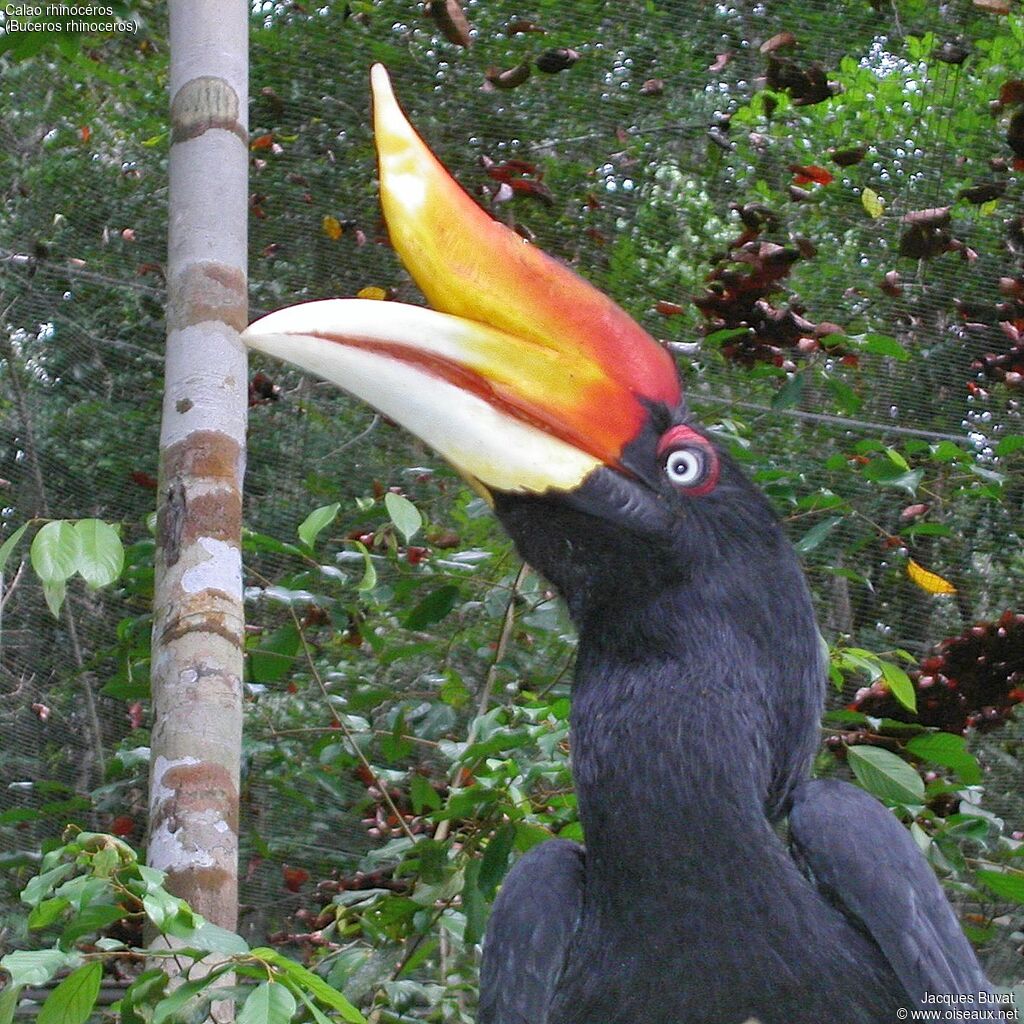
( Raman, 1998 Golding and Williams, 1986 Mobley, 2008 Raman, 1998)Ī unique feature of Buceros bicornis and some other hornbill species such as Buceros rhinoceros is the way that the female incubates and cares for her eggs.

Buceros bicornis tends to be monogamous, and the pair remains together throughout their lives. Mates, or potential mates, also perform duets where the male calls, the female replies, and they continue on in a loud volley. This could possibly be a display of superiority in competition for a mate. Males compete for females by butting into each other in the presence of a female prior to the breeding season. Male casque size is important in attracting and fighting for mates. Great hornbills breed between the months of February and May. ( "Popular Handbook of Indian Birds", 2007 Golding and Williams, 1986 James and Kannan, 2009 Mobley, 2008 Raman, 1998) bicornis from other species is its greatly curved bill and prominent casque. Males and females are similar except that the irises of males are red while those of females are white, and males have slightly larger bills and casques. Like many other hornbills, these birds have prominent eyelashes. It may be used by males to fight with other males and attract females. The most recognizable feature of hornbills is the casque, which is a hollow structure located on top of the bill.

This may give the bill, neck, casque, and tail and wing feathers coloration varying from yellow to red. A preen gland near the tail secretes tinted oil, which is spread across the feathers by the bird during grooming. The tail is white and is crossed by a subterminal black band. The body, head, and wings are primarily black the abdomen and neck are white. They are vividly colored and easily recognizable. Great hornbills are fairly large, ranging from 95 to 120 cm in length and featuring a wingspan of 151 to 178 cm. ( "Endangered Animals of Thailand", 1990 "Popular Handbook of Indian Birds", 2007 Datta and Rawat, 2003 Datta, 1998 Kannan and James, 1999) They are known to inhabit elevations of 600 to 2000 m. The same nesting site is used year after year if possible. The height of the tree and the presence of a natural cavity large enough to hold a female and her eggs are more important than the type of tree.

Old-growth trees that extend beyond the height of the canopy are preferred for nesting. Great hornbills are arboreal and live mainly in wet, tall, evergreen forests. ( "Endangered Animals of Thailand", 1990 "Popular Handbook of Indian Birds", 2007 Datta, 1998 Mobley, 2008 Raman and Mudappa, 2003) In India, they and several other hornbill species live in the Western Ghats mountain range and forests in both the northeastern and southern regions. They are breeding residents in Bhutan, Cambodia, China, India, Indonesia, Laos, Malaysia, Myanmar, Nepal, Thailand and Vietnam. Buceros bicornis is found in mainland Southeast Asia, the Malay Peninsula and Indonesia.


 0 kommentar(er)
0 kommentar(er)
